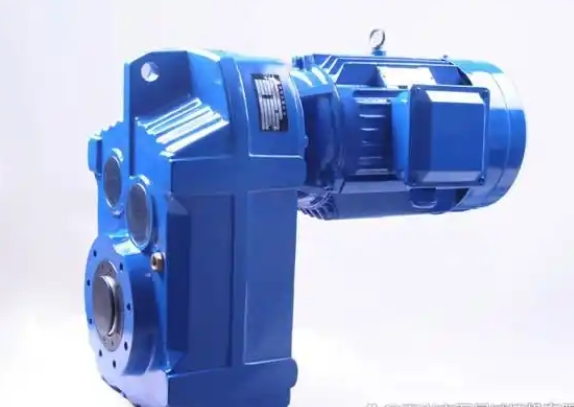What are the precautions when replacing the lubricating oil of GRF107-Y30-4P6.66-M4 reducer?
When replacing the lubricating oil of GRF107-Y30-4P6.66-M4 reducer, the following key points should be noted to ensure standardized operation and extend equipment life:
1、 Preparation before oil change
Shutdown and Safety
Be sure to cut off the power supply of the reducer first and hang a warning sign saying "Do not close" to avoid safety accidents caused by misoperation.

If the equipment has just finished running, wait for the oil temperature to drop below 40 ℃ (to avoid burns) before operating; If the oil temperature is too low (such as in winter), it can be briefly turned on to preheat the lubricating oil, making it more fluid and easier to discharge.
Tools and Environment
Prepare specialized tools: oil drain bolt wrench, funnel, oil receiving container (clean and free of impurities), wiping cloth, new lubricating oil, etc.
Ensure a clean oil change environment and prevent dust and debris from entering the interior of the gearbox. If operating outdoors or in high dust environments, protective measures (such as covering) should be taken.
Oil quality inspection
Before discharging old oil, observe the condition of the oil: if the oil is turbid, has metal debris or emulsification, check whether the gears and bearings are worn abnormally, and contact professional personnel for maintenance if necessary.
Record the color, odor, and impurities of old oil as a reference for equipment maintenance records.
2、 Key points for oil change operation
Discharge old oil
Find the oil drain bolt at the bottom of the reducer, slowly unscrew it (taking care to prevent hot oil splashing), and completely drain the old oil into the oil receiving container.
If the gearbox is equipped with an oil level mirror or filter element, the filter element can be removed and cleaned (if the filter element needs to be replaced, follow the instructions).
Suggest blowing the inner wall of the oil chamber with compressed air (note that the pressure should not be too high) to remove residual impurities and oil stains.
Cleaning and sealing
Wipe the oil drain port, oil level hole, and surrounding area with a clean cloth to ensure that there are no impurities remaining.
Check the sealing ring (O-ring or gasket) of the oil drain bolt. If it ages or deforms, replace it with a new one to avoid oil leakage.
When installing the oil drain bolt, tighten it to the specified torque (usually 15-30N · m according to the instruction manual) to prevent excessive looseness, oil leakage, or damage to the threads caused by over tightening.
Add new oil
Add new lubricating oil slowly through the oil filling port (or funnel) to avoid foam in the torrent.
Oil level control: Observe the oil level through the oil level sight glass or dipstick to ensure that the oil level is between the upper and lower limit marks (most reducers are located at the centerline of the sight glass). Excessive filling can lead to an increase in oil temperature and a decrease in efficiency; Insufficient filling may cause poor lubrication.
If using synthetic oil, it is important to avoid mixing it with old oil (especially mineral oil) to avoid affecting its performance. If you need to change the oil type, it is recommended to rinse the oil chamber with a small amount of new oil before adding it formally.
3、 Inspection and recording after oil change
Trial operation and leakage inspection
Before starting up, confirm that all components are installed properly, manually rotate the coupling (or motor shaft), and check if the rotation is smooth.
Connect the power supply and run the gearbox without load for 5-10 minutes, observing whether there is any abnormal noise, vibration, or heating in the gearbox.
After stopping the machine, check if there is any oil leakage at the drain port, flange interface, and other parts. If there is any leakage, it should be dealt with in a timely manner.

